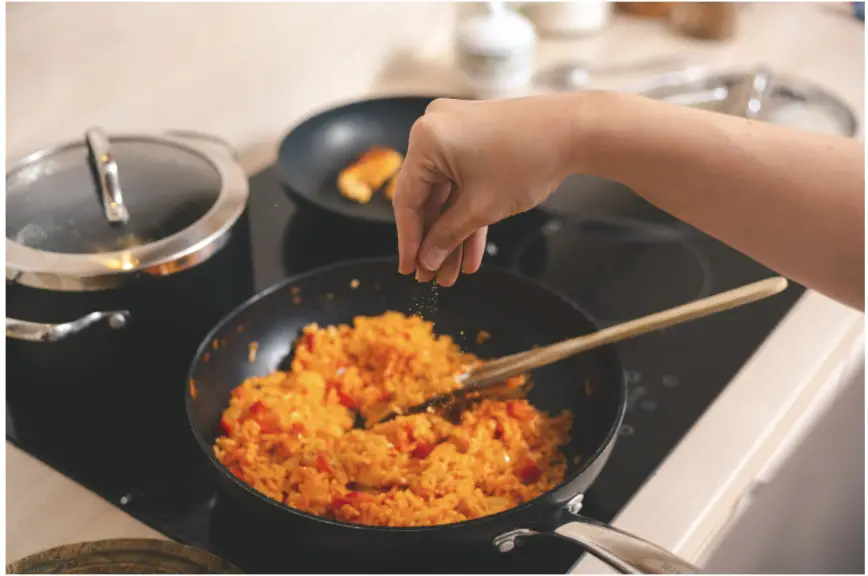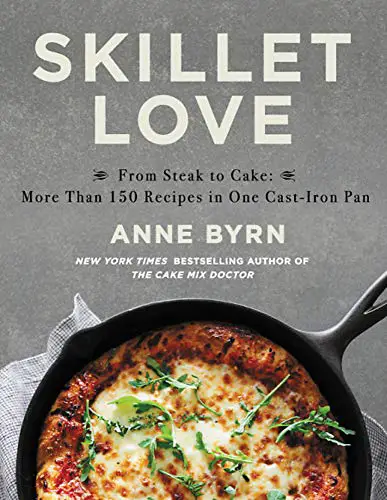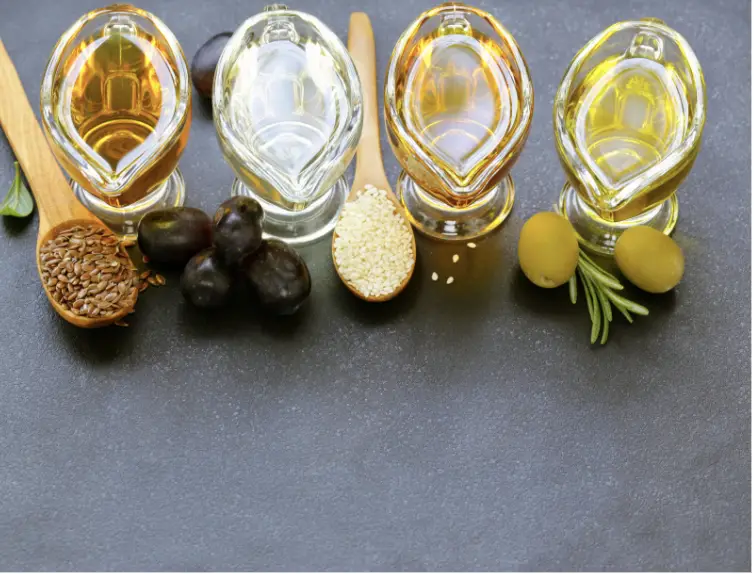Help! My cast iron dutch oven looks terrible… food is sticking.. rust is forming around the edges. What am I to do? It turns out the answer is in how to season a cast iron dutch oven.
Frankly, the last thing I want is to have a dirty cast iron pan.
It looks gross. And who wants to cook with gross things? I thought since my pan came pre-seasoned all I needed to do was rinse and dry my pan. That’s not the case.
To keep your cast iron dutch oven, skillet, or other cast iron ware in tip-top shape you need to season continuously! I’ll show you how to do this so quickly and simply below.
So, What Is Seasoning?

Originally, I thought seasoning cast iron was an outdated concept. I was VERY wrong. Unless your cast iron comes enameled, and the surface isn’t exposed to air, it can and will rust.
Even if your cast iron dutch oven comes pre-seasoned, you need to continue taking care of it.
In short, seasoning cast iron is when you heat your cast iron after rubbing it with a seasoning oil.
Why Is Seasoning So Smart?

Seasoning is the process of creating a non-stick surface for your cast iron pan. Doing so keeps food from sticking/getting destroyed, improves flavor, and keeps your pan lasting forever.
Anne Byrn, American cookbook author and Southern Cooking Specialist wrote the book on cast iron. From her recently released “Skillet Love” Byrn shares:
“Oil is the best friend to the skillet. It keeps it protected, impervious to any moisture that might cause it to rust. Think of oil on a skillet like moisturizer on your skin. … Heat plus oil builds the patina and makes your skillet naturally nonstick.”
Enough science, let’s get into the how-to of it all:
How To Season Cast Iron: If You Have A New Un-Seasoned Pan
With a brand-new cast iron skillet or dutch oven you’ll want to follow these simple steps. Remember, the first seasoning is going to be more intensive than maintenance:
- Preheat your oven to 375 degrees Fahrenheit.
- Get your water hot and scrub your skillet in soapy water. Really clean it out.
- Using a towl (not a paper towel or fabric that pills easily) dry your cast iron throughouly.
- Spread a small layer of oil over your cast iron. I talk more about specific oils down below.
- Place your oiled cast iron piece in the oven upside down. Make sure to have a piece of aluminum foil or tray to catch any oil that may drip down! Keep in your oven for 1 hour and let cool.
How To Season Cast Iron: From Good To Great
Most cast iron skillets, dutch ovens, and so on come pre-seasoned these days. If that’s the case, then you don’t need to follow the step above!
For ongoing seasoning, you have two options:
Ongoing Seasoning Option #1:
Right after you cook, clean, and dry your cast iron piece, put it back on the heat for 2 minutes. Add some seasoning oil to the top of your cast iron piece and rub the oil around the entire surface.
We’re talking sides, bottom, cooking surface.. all over. Once rubbed in, you’re done.
I like this because it’s quick. The heat opens up the pores in the cast iron so it’s still effective.
Ongoing Seasoning Option #2:
Again, clean and dry your cast iron then rub with seasoning oil. Simply leave your cast iron in a 200 degree Fahrenheit oven for 15-20 minutes and you’re good to go.
I like this option if I’ve recently baked something. Typically the oven will still be hot so I can set the cast iron in the oven for a few minutes as I eat or clean up. Just remember to have something under your cast iron to catch and possible oil drips!
But What if…

Byrn recommends the least saturated options, including canola, corn, soybean, sunflower and flaxseed.
Cook’s Illustrated’s top pick is flaxseed oil, because it is faster at creating a more durable seasoning.
Sunflower and soybean oil (Lodge uses soybean on its cookware) are good, affordable options.
If you prefer to use lard, Byrn cautions to wipe off any excess on the surface so it doesn’t go rancid in your cabinet. And again, don’t use any paper towels or linty rags or you’ll end up with a mess!
A simple option for seasoning would be to invest in a season kit like this one too.
People Also Ask
How can you tell if cast iron is seasoned?
One way to test the seasoning of a pan is to cook eggs (heat one tablespoon of vegetable oil into a skillet at medium-low temperature for three minutes, and then pour in the egg). If the pan is properly seasoned, there shouldn’t be any issues with sticking.
Why is my cast iron pan sticky after seasoning?
Although oil is important in the process of seasoning, however, if you use excessive oil when you’re seasoning or you cook, it could create a sticky surface on the pan.
What oil should not be used on a cast iron Pan?
You don’t have to use butter or olive oil to season your cast-iron pan. They are great to cook with, but not for the initial seasoning.
Summary
Now you’re an expert at seasoning your cast iron skillet or dutch oven. Pretty soon, you’ll have all the power of cast iron with none of the sticky mess.
I highly recommend making this super simple. After cooking, you can plate your food, rinse off, dry, and season your cast iron within 2-5 minutes.
By the way, to help make this all simple and quick it wouldn’t be a bad idea to add a bit of oil to your cast iron cookware as you bring it up to heat.
The most important think you can do is keep cooking! Your cast iron is constantly evolving. The more you cook, the more you’ll end up seasoning your pan and making it get better with time. Take care of your cast iron and it’ll take care of you.
What’s your favorite thing to cook in your cast iron dutch oven or skillet? Let me know in the comments below.


